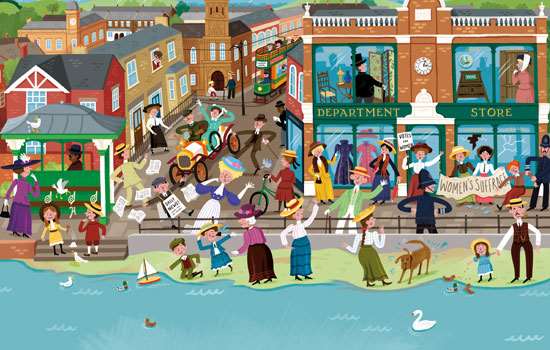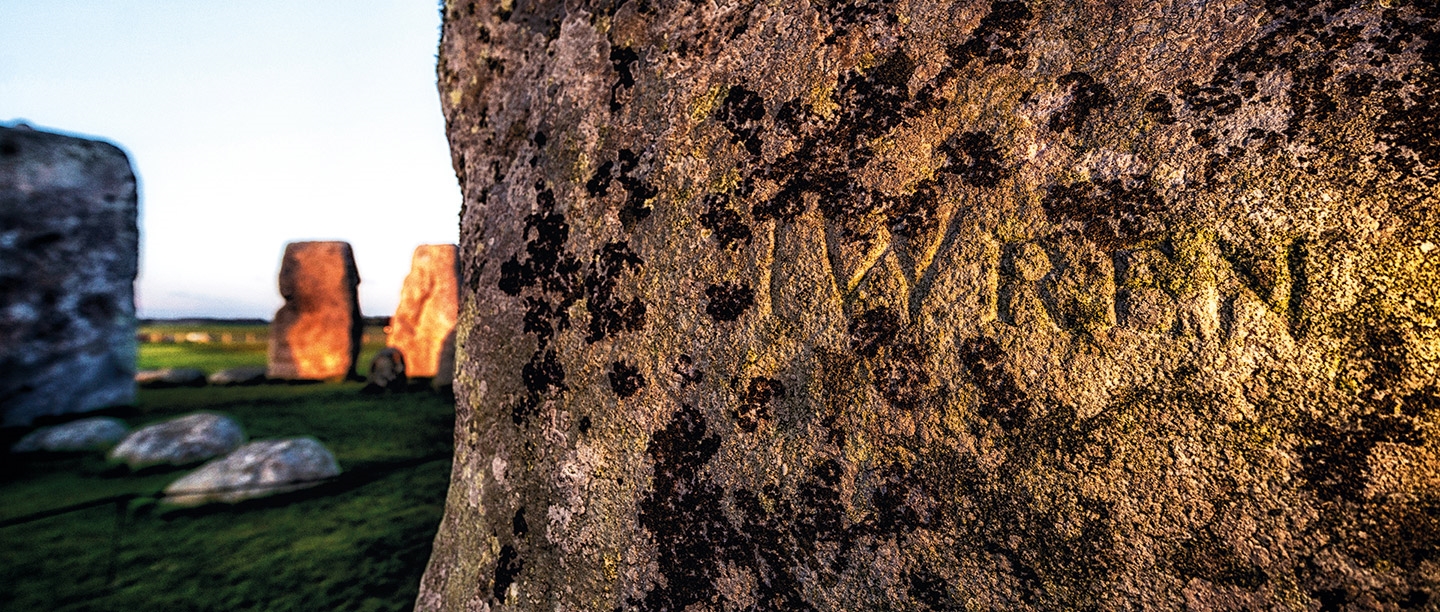
Close Ups
We care for thousands of artefacts, paintings and plants – and each one has a story to tell. Join our experts to find out what makes these items so special, and zoom in to discover new perspectives on these treasures from the past.
Shell Collection at Chesters Roman Fort and Museum, Northumberland
This assortment of eye-catching shells is just a small selection of a recently rediscovered collection belonging to Bridget Atkinson (1732–1814), who lived in Cumbria, never left Britain, and rarely travelled outside the county. Through a network of friends, relatives and shell dealers, she was connected to the far reaches of the globe, which enabled her to collect more than 1,000 rare and exotic shells. These included two small snail shells from New Zealand, likely collected by George Dixon, an armourer on Captain Cook’s third voyage. Until recently, it was thought Atkinson’s collection had been lost, but around 200 shells were discovered last year. These have been reunited with the Clayton Collection at Chesters Roman Fort and Museum. The Clayton Collection consists of Roman material collected by Bridget’s grandson John Clayton in the 19th century. A new exhibition in the museum at Chesters reveals the story of Atkinson and her shells and what they tell us about the natural world.
Words: Dr Frances McIntosh
Photograph: Mike Slawski
Discover more about Chesters Roman Fort and Museum

Stone capital, Corbridge Roman Town, Northumberland
Around AD 70 the Roman army crossed the River Tyne at Corbridge, setting up a temporary camp on its north bank. Over the next 350 years, Corbridge developed from military fort to thriving urban settlement. Corbridge occupied a pivotal position, located just south of Hadrian’s Wall and at the crossroads of the Stanegate and Dere Street, part of the Roman network of roads that allowed trade, supplies and men to move rapidly.
A few miles north, the massive physical barrier built under Emperor Hadrian regulated and curtailed movement. The countryside surrounding the town was shaped by new agricultural and industrial practices, and water courses were canalised to supply bathhouses, workshops and a public fountain.
This delicate stone capital formed part of the 2nd-century fountain at the heart of Corbridge. Water cascaded through three tanks set beneath an ornamental pediment supported on delicate fluted columns and flanked by a pair of statues. A capital like this would have been familiar in Rome. Its presence here was a statement of Rome’s influence on the life and landscape of the Empire’s northern frontier.
Words: Kevin Booth
Photograph: Magenta Photographic Studios
Discover more about Corbridge Roman Town
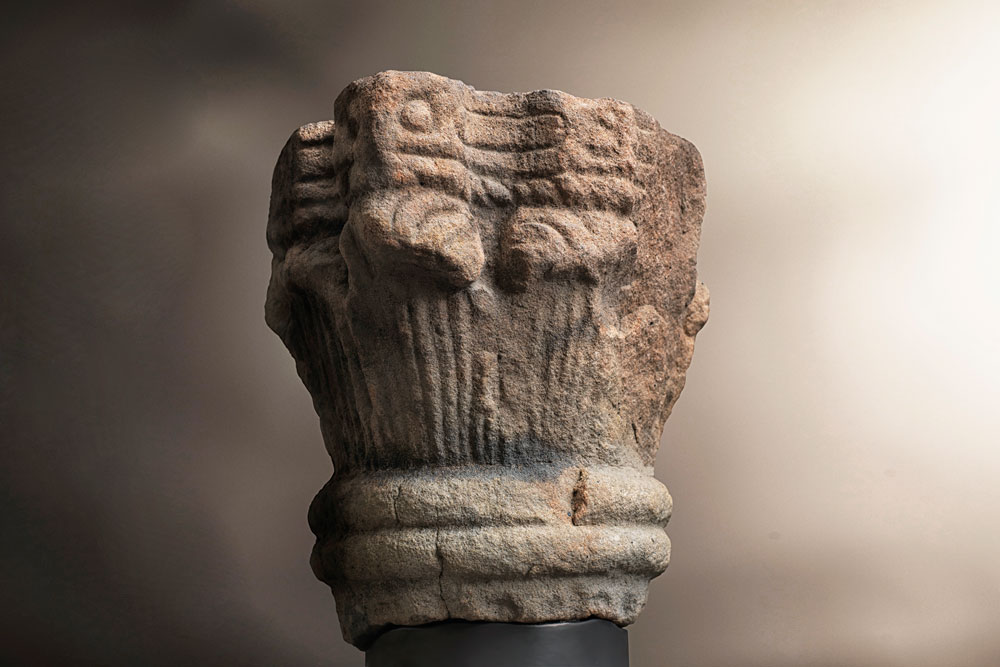
Dismal and Cheerful Desmonds at Brodsworth Hall, Yorkshire
Charles Grant-Dalton and his family moved to Brodsworth Hall in South Yorkshire after inheriting it in 1931. Among the many belongings the family brought with them to Brodsworth was a much-loved collection of Dalmatian dog toys with droopy ears, pink tongues and button eyes, belonging to Charles’s daughter Pamela Grant-Dalton.
One of the most popular toys of the late 1920s, ‘Dismal Desmond’ was said to look dejected because his owner, Miss Daisy Doodah, had left him. Designed by Richard Elliott, Dismal Desmond first appeared in a boys’ magazine, and soft toys were then produced by Dean’s Rag Book Company. ‘Cheerful Desmonds’ were also produced, along with china ornaments and novelty items such as egg cups and door stops.
The collection at Brodsworth contains 13 Desmonds (both Dismal and Cheerful) in a whole range of sizes. They travelled around with Pamela, including on holidays to the coast, where a photograph shows her and one of the ‘Dismals’ on a rocky beach together. Such was the popularity of Dismal Desmond, he remained in production until the Second World War and had a brief revival in the 1980s.
Words: Eleanor Matthews
Photograph: Dustin Smith
Visit Brodsworth Hall and Gardens
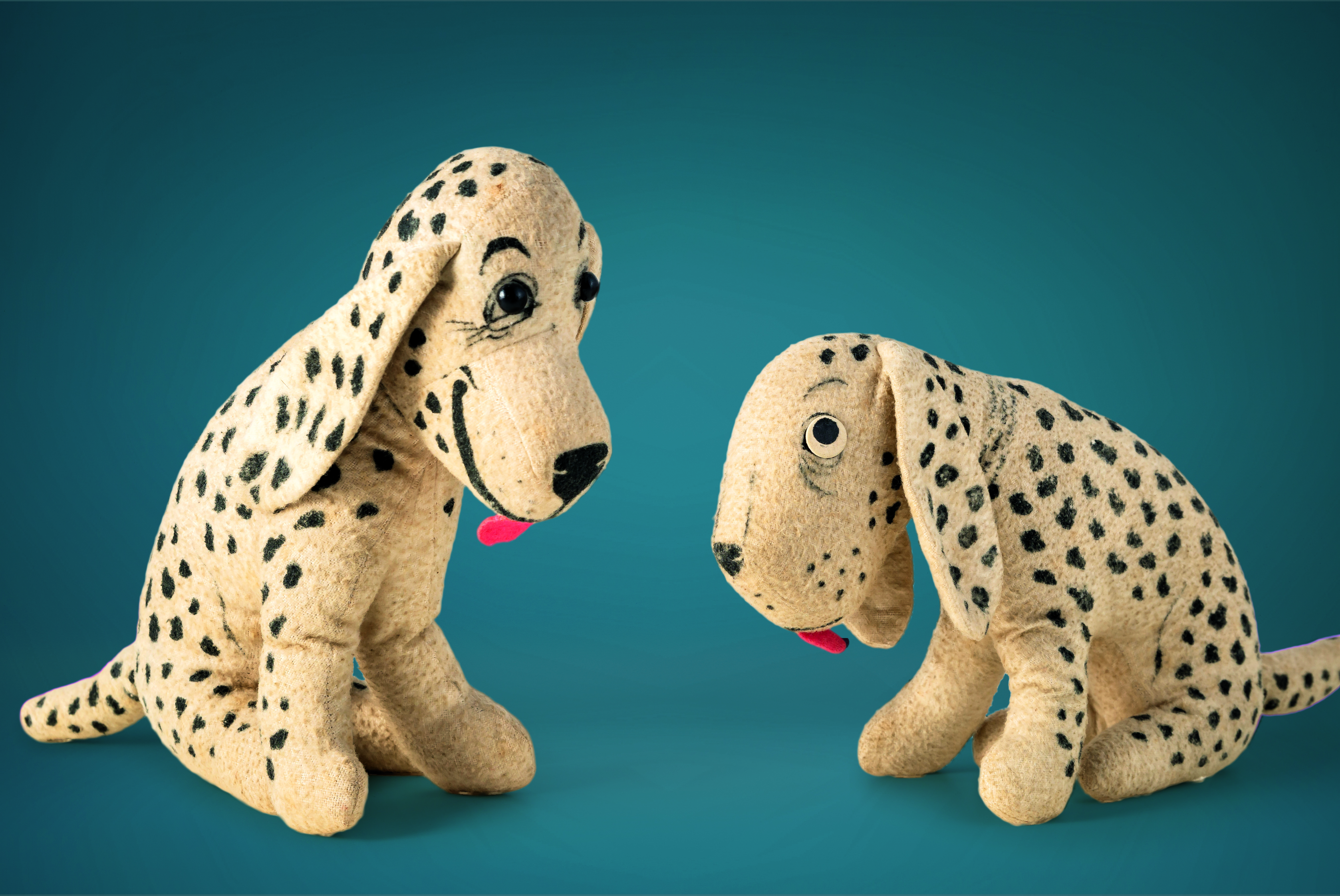
Skeleton table clock at Kenwood, London
One of the more unusual objects in the collection at Kenwood is an 18th-century table clock designed by Flemish-born clockmaker John Joseph Merlin (1735–1803). Dated 1776, it is the earliest known ‘skeleton’ clock, so called because it has no outer casing, allowing a view of the inner clockwork mechanism.
The clock was mostly likely conceived as an exhibition piece that would allow potential patrons to appreciate Merlin’s experimental approach to clockmaking. In particular, the ‘skeleton’ design showcased his ingenuity in crafting an eight-day movement (a mechanical movement that must be wound once per week) with the minimum number of wheels.
Described by the diarist and novelist Fanny Burney as ‘the very ingenious mechanic’, Merlin also made musical instruments, mechanical furniture (including an early example of a wheelchair) and even a pair of roller skates. He was also the proprietor of Merlin’s Mechanical Museum, where his inventions were displayed. After opening in the 1780s, the museum became one of London’s most popular attractions, helped by the tours Merlin would give in fancy dress.
Words: Louise Cooling
Photograph: Dave Caudrey
Visit Kenwood
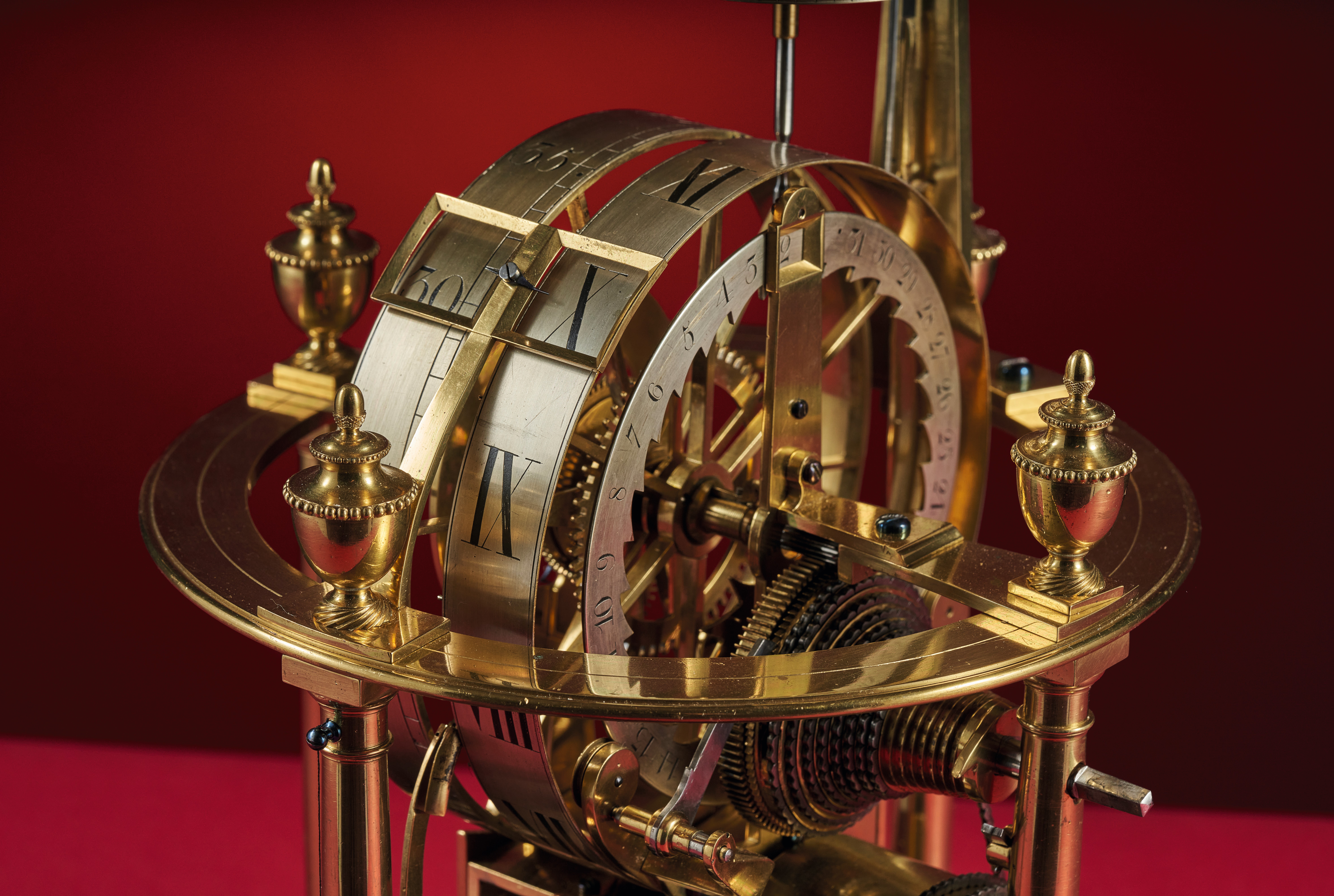
Dolls’ house at Audley End House, Essex
Among the treasures in the collection at Audley End House and Gardens is this rather grand dolls’ house. Measuring almost two metres across and consisting of 10 rooms, it was – and still is – the centrepiece of the nursery in which the 3rd Lord and Lady Braybrooke’s children spent many happy hours playing during the 1820s and 30s. The model house dates from the early 19th century and its dolls, decorations and furniture were mostly produced in the 1820s. Some pieces are believed to be later additions, suggesting that the children continued to adapt this cherished possession as they grew older. The construction is surprisingly simple. There is no staircase and the rooms are uncomplicated. However, the wallpapers are exquisite examples of Regency design, and several of the rooms are trimmed with borders of embossed gold paper.
Words: Peter Moore
Photograph: Joby Sessions
Discover more about Audley End House and Gardens
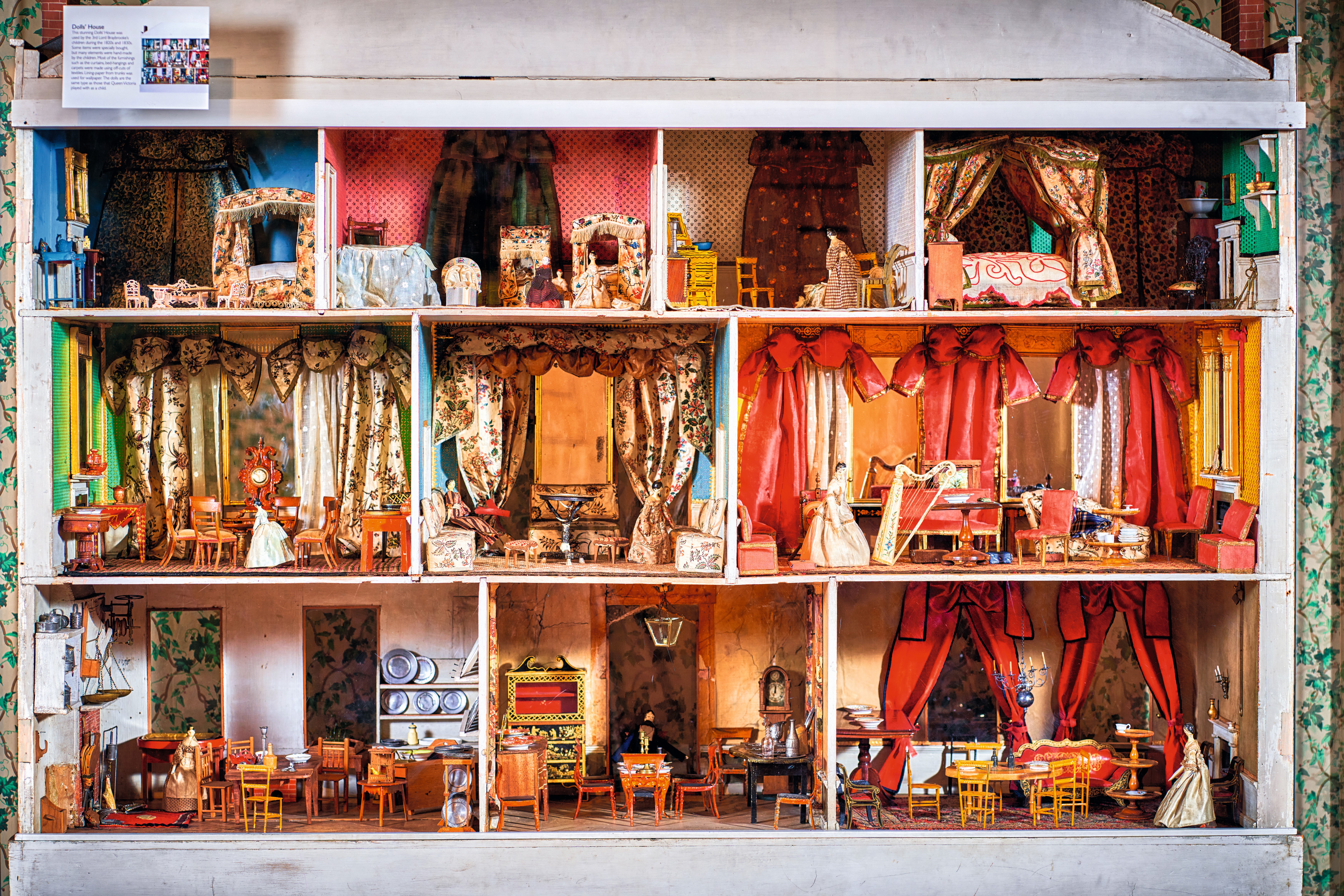
Gold finger ring, Corbridge Roman Town, Northumberland
This intricate gold finger ring was found at Corbridge Roman Town. It is made of almost 12 grams of gold and has 16 facets, decorated with openwork peltas above and below a Greek inscription, ΠΟΛΕΜΙΟϒ ΦΙΛΤΡΟΝ, which translates as 'the love token of Polemius'. The wonderful craftsmanship means that the ring would have been a very expensive item and a specially commissioned piece. In Roman life, religion, belief and magic were intertwined, so this ring might be more than simply a statement of love. It could have been imbued with magical properties to aid Polemius in his search for love when he wore it. Greek was the language used in magical spells and charms, so it makes sense it would be used here. It is not known who Polemius was. He may have been a fourth-century citizen of Corbridge or perhaps he was visiting. Could he understand the Greek writing, or was it used for its efficacy in the charm? Perhaps he lived in the largest house found on site, with its painted wall plaster and underfloor heating. Whoever Polemius was, we know he had large hands, as the ring measures 27mm in diameter, much bigger than our largest modern ring size.
Words: Dr Frances McIntosh
Photo: Mike Slawski
Discover more about Corbridge Roman Town
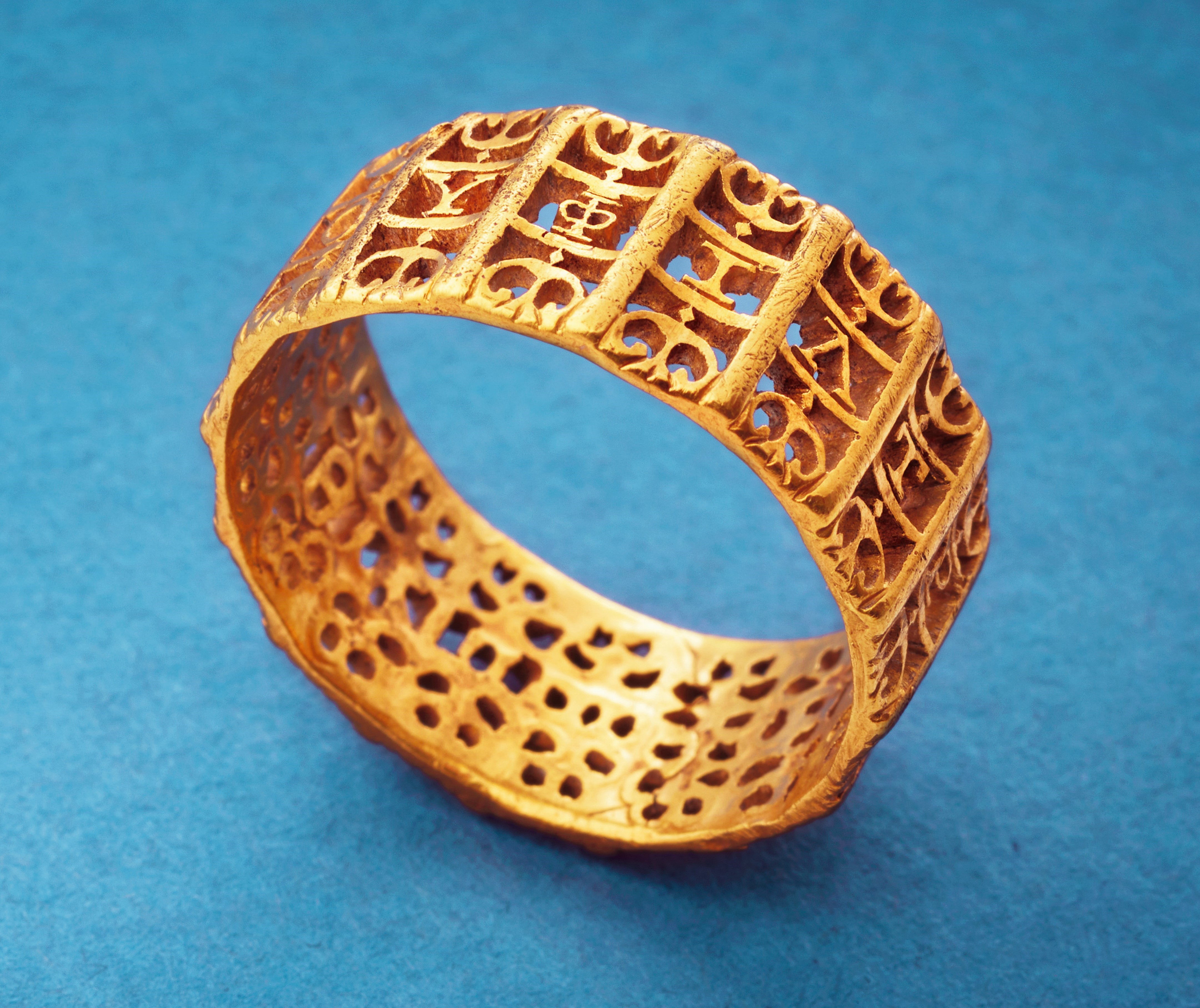
Oval dish, Ranger’s House, London
This highly decorative dish (c.1570) is attributed to the 16th-century French potter Bernard Palissy. It is an example of his rustiques figulines, a decorative style achieved by casting shapes of plants and animals in moulds taken from real-life examples. In the 16th century this dish would have been owned by someone with wealth and a taste for the curiosities of the natural world.
Palissy’s talent led to his appointment, in around 1565, as ‘inventor of rustic pottery’ to France’s King Charles IX and the Queen Mother, Catherine de Medici, for whom Palissy built a pottery grotto in the garden of the Tuileries Palace in Paris. He enjoyed great success until, after three decades of royal favour, he was imprisoned during the French Wars of Religion and died soon afterwards.
Today, this dish forms part of the Wernher Collection at Ranger’s House in London. The collection of more than 700 works was amassed by Sir Julius Wernher (1850–1912), who was fascinated by objects that he called ‘splendidly ugly’ – pieces that combined incredible craftsmanship with unusual subject matter.
Words: Olivia Fryman
Discover more about Ranger's House

Henrietta Darwin's keepsake box at Down House
Early in 2021 an exciting donation was made to the collection at Down House – a red leather keepsake box that belonged to Charles Darwin’s daughters Annie and Henrietta (Etty), which contains childhood treasures and mementoes associated with the great scientist.
Charles and Emma Darwin initially gave the box to their eldest daughter Annie but, when she tragically died aged 10 in 1851, the box passed to her sister Etty. Etty continued to fill it with souvenirs, including letters, locks of hair, Charles’ embroidered silk handkerchief, and shells collected during his voyage on HMS Beagle.
In 1897 Etty gave the box to her niece, Margaret Keynes, and it remained in the Keynes family until it was donated by the estate of Charles Darwin’s great-grandson, Richard Darwin Keynes. We are now appealing to the public to raise funds to conserve the box and its contents so they can go on display at Down House later in the year.
Words: Olivia Fryman
Discover more about Down House
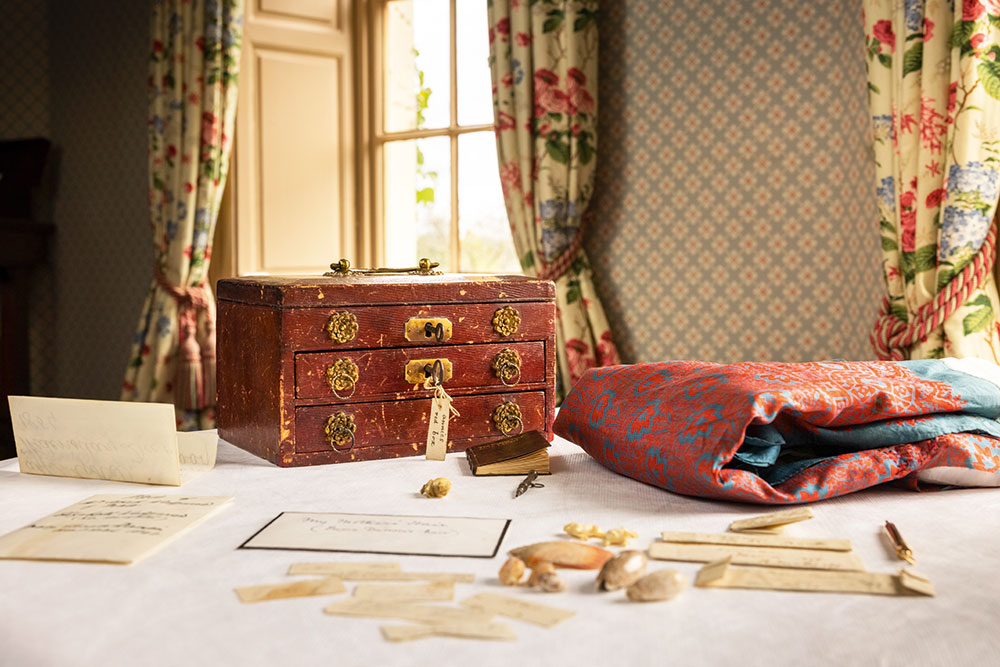
Native American material culture at Audley End
Audley End has been home to many generations of collectors over the centuries, and consequently the house today contains thousands of objects. In addition to the many works of European art and design on display, there are also some more unexpected artefacts from all over the world. Among these are a small group of incredibly rare items of Native American origin. A deerskin shirt, brought home by Richard Cornwallis Neville following his posting to the British military garrison in Montreal in 1840, exhibits the skill of the indigenous people of the Great Lakes in manufacturing textiles during the early 19th century. Garments such as this were collected by European military officers but very few survive today. Two ball-headed war clubs, which were brought to Audley End by Lady Jane Cornwallis following her marriage to Richard Neville, 3rd Baron Braybrooke, were originally collected by her grandfather, Charles Cornwallis, 1st Marquess Cornwallis. Recent examination of the iconographic carvings on the clubs indicates that they were used around 1781, during the American Revolutionary War, with one of them seeing action in 23 battles.
Words: Peter Moore
Photograph: Michael Bowles
Discover more about Audley End House and Gardens
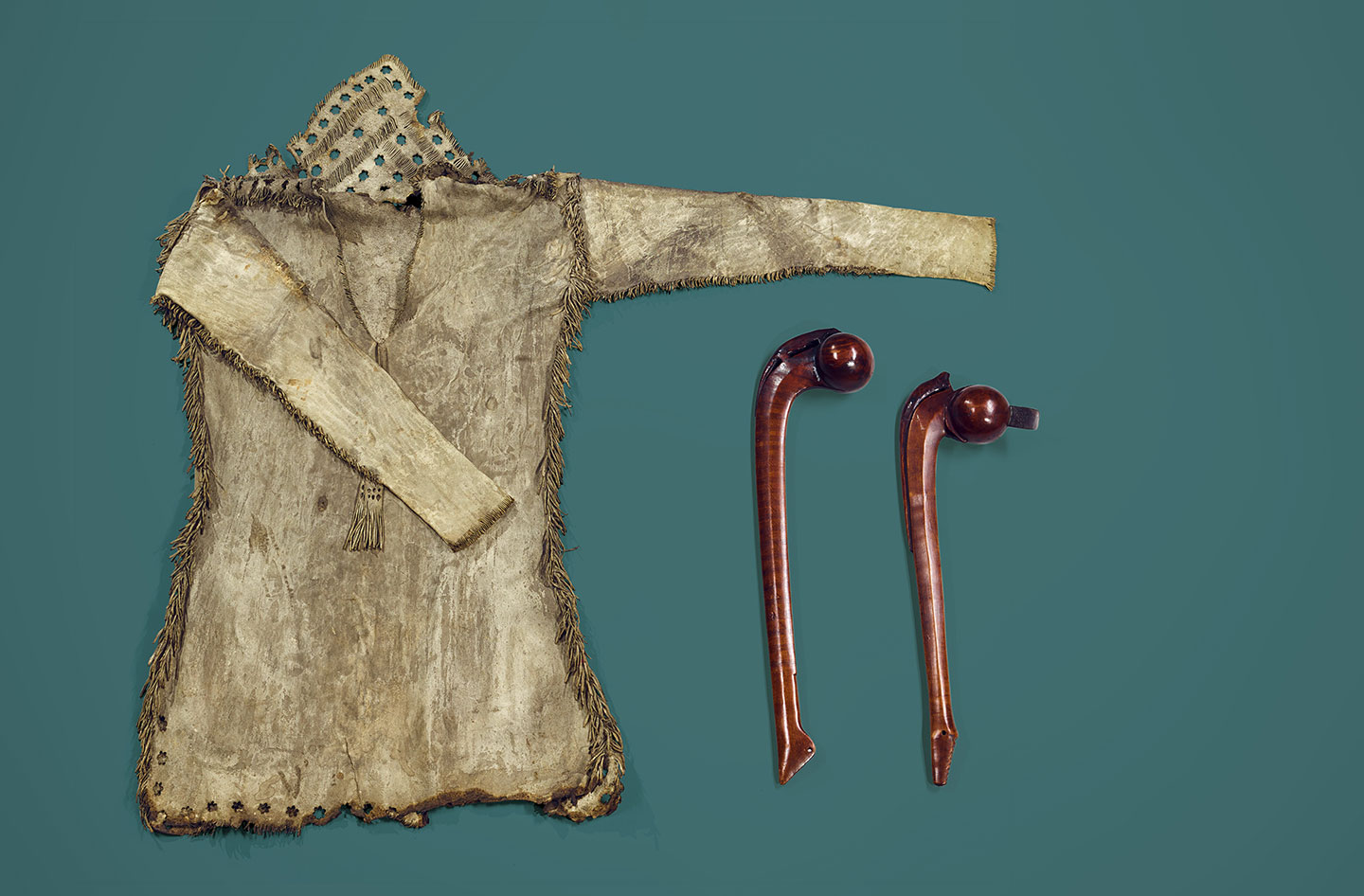
Richmond Castle Non-Combatant Corps uniform
During the First World War around 3,400 conscientious objectors willingly served in the Non-Combatant Corps (NCC), a military regiment that did not carry weapons. One of these companies was based at Richmond Castle. Like all soldiers in the British army, these men wore military uniform. During the First World War, this comprised the 1905 pattern General Service khaki, badged with NCC shoulder titles and cap badge. No original NCC uniform is known to have survived – presumably because the uniform could be easily reused in other regiments, although the stigma of being a conscientious objector was probably a contributing factor as well. We have brought together original components of First World War uniforms to create what we believe is the only representation of an NCC uniform on display in the country. Joining related ephemera, the uniform is part of a brand new museum at the site, which tells the story of Richmond Castle from the Norman Conquest to the First World War.
Words: Richard Mason
Photograph: Jo Crawford
Discover more about Richmond Castle
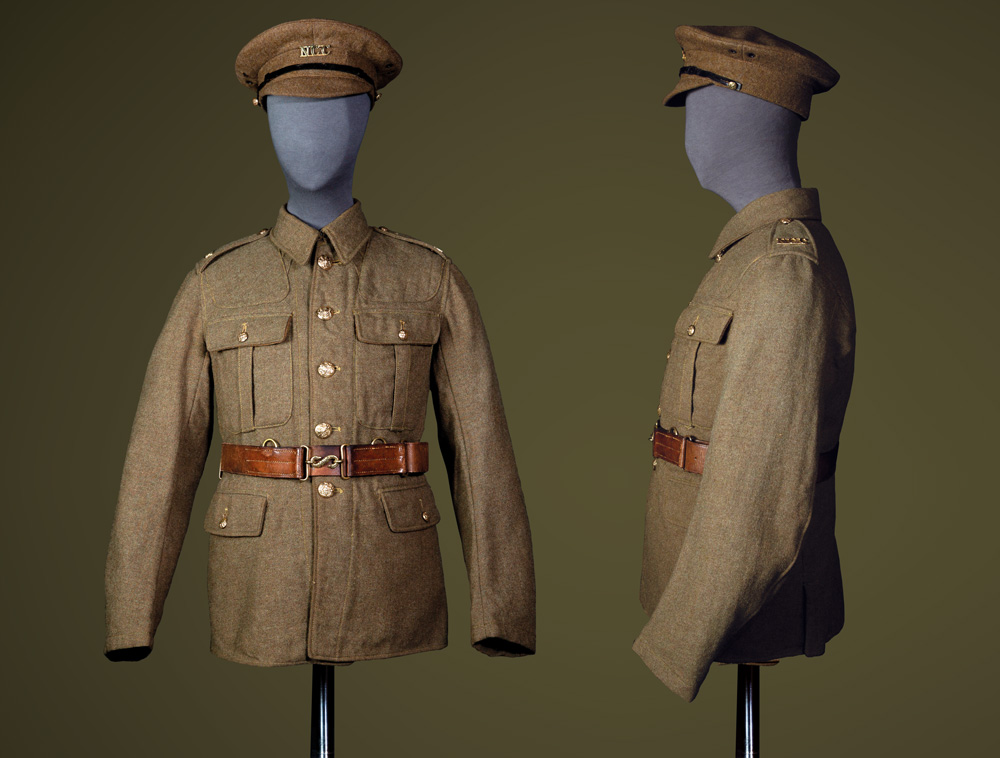
William the Conqueror bust, Richmond Castle
The conquest of England in 1066 is largely associated with one man, William of Normandy. His invasion radically changed the character of our medieval society, affecting architecture, language, identity and the economy. One of the most common and distinctive legacies of the conquest is the network of castles constructed by the Normans to control territory. One of these is Richmond Castle in North Yorkshire, which was first built by Alan Rufus in 1070, four years after he fought alongside William the Conqueror at the Battle of Hastings. Today, it remains one of the best-preserved early Norman castles in England.
Among the objects on display at the castle is this lead bust of William the Conqueror, which was made in around 1740. The bust is a contemporary copy from a series of sculptures by John Michael Rysbrack depicting the kings of England, commissioned by Queen Caroline, consort to George II. The series was, at least in part, about affirming their royal lineage and cultural identity. It paved the way for the wider trend in ‘establishing’ ancestry, which remained fashionable throughout the 18th and early 19th centuries.
Words: Richard Mason
Discover more about Richmond Castle
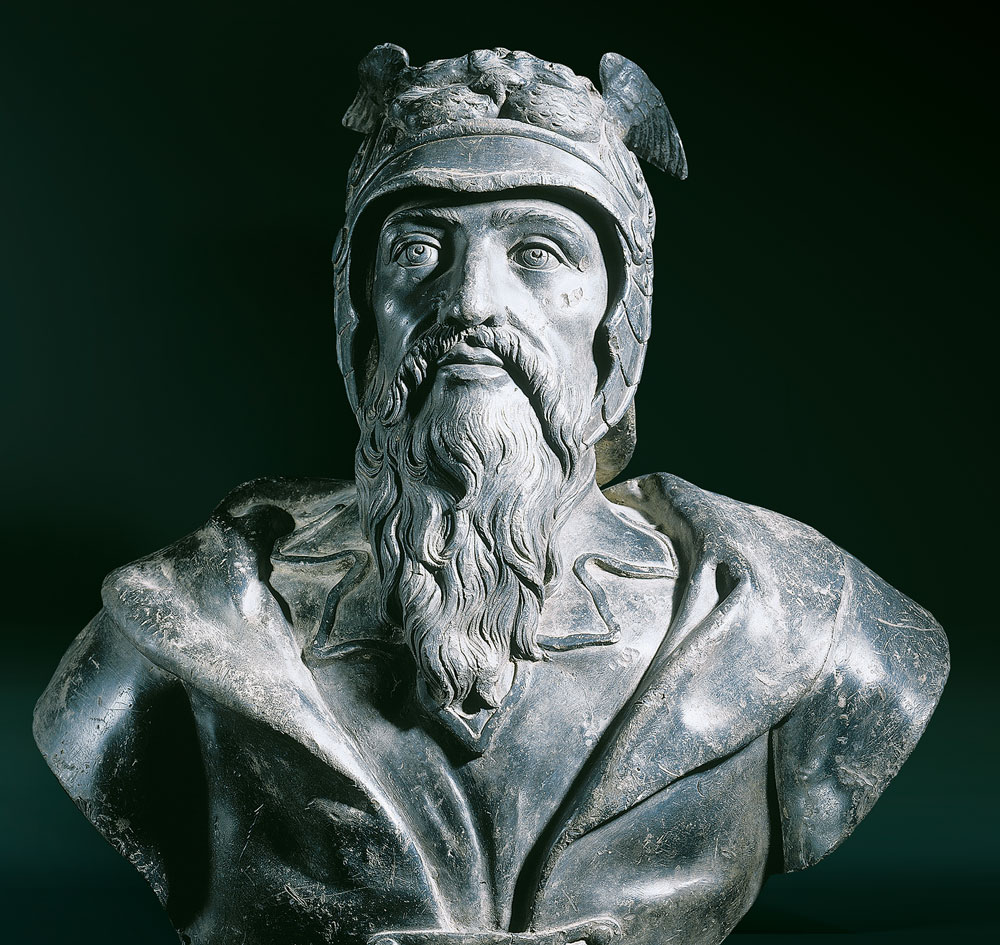
Polish SOE War Memorial, Audley End House and Gardens
The Polish Special Operations Executive (SOE) War Memorial at Audley End is situated in West Park close to the remains of the Jacobean Mount Garden. It was unveiled on 20 June 1983 by Colonel Sir Peter Wilkinson, a former SOE intelligence officer, in memory of the 112 Polish parachutists who lost their lives during the Second World War and its aftermath. Present at the unveiling were the Polish Prime Minister in Exile, Kazimierz Sabbat, and the then British Minister of Defence, Michael Heseltine. Each year on 11 November (Armistice Day and Polish Independence Day) staff at Audley End stop their work, and gather at the memorial for a short service, ensuring that the dedication and bravery of the Polish agents are not forgotten.
Words: Andrew Hann
Discover more about the Polish SOE at Audley End
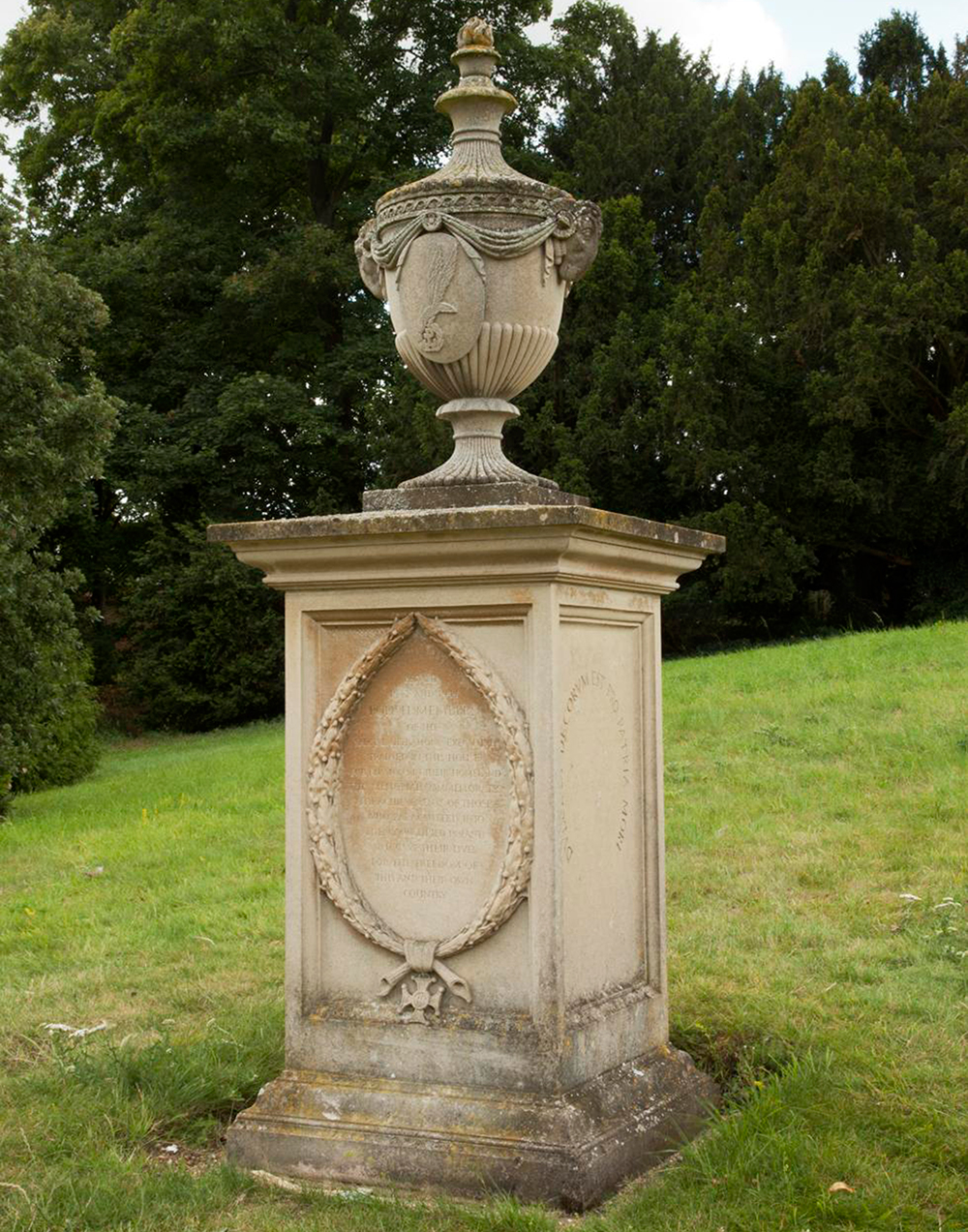
Lord’s Prayer ring, Ranger’s House, London
This gold ring from The Wernher Collection at Ranger's House showcases an outstanding feat of craftsmanship. It was collected by the 19th-century businessman Julius Wernher, who had a passion for small, unusual and richly embellished objects.
Beneath a crystal surrounded by garnets is a piece of vellum (parchment made from animal skin) inscribed in miniature with passages from the Lord’s Prayer. Probably created in the late 18th century, the ring is the product of collaboration between a goldsmith and a talented calligrapher.
The intricate craftsmanship shows that it was a high status object, owned by a wealthy patron. As a portable jewel designed to be worn on the owner’s hands – a part of the body integral to prayer – the ring was probably used in private devotion. The use of vellum also suggests the ring’s connection to earlier religious traditions – it was often used in Books of Hours, which was the standard book of popular devotion during the later Middle Ages and Renaissance.
Now on display alongside jewels spanning many European artistic traditions, the ring demonstrates the beguiling effects that English makers achieved by combining goldsmithing with pen and ink.
Words: Tessa Kilgarriff
Photograph: Joby Sessions/The Wernher Foundation
Discover more about Ranger's House
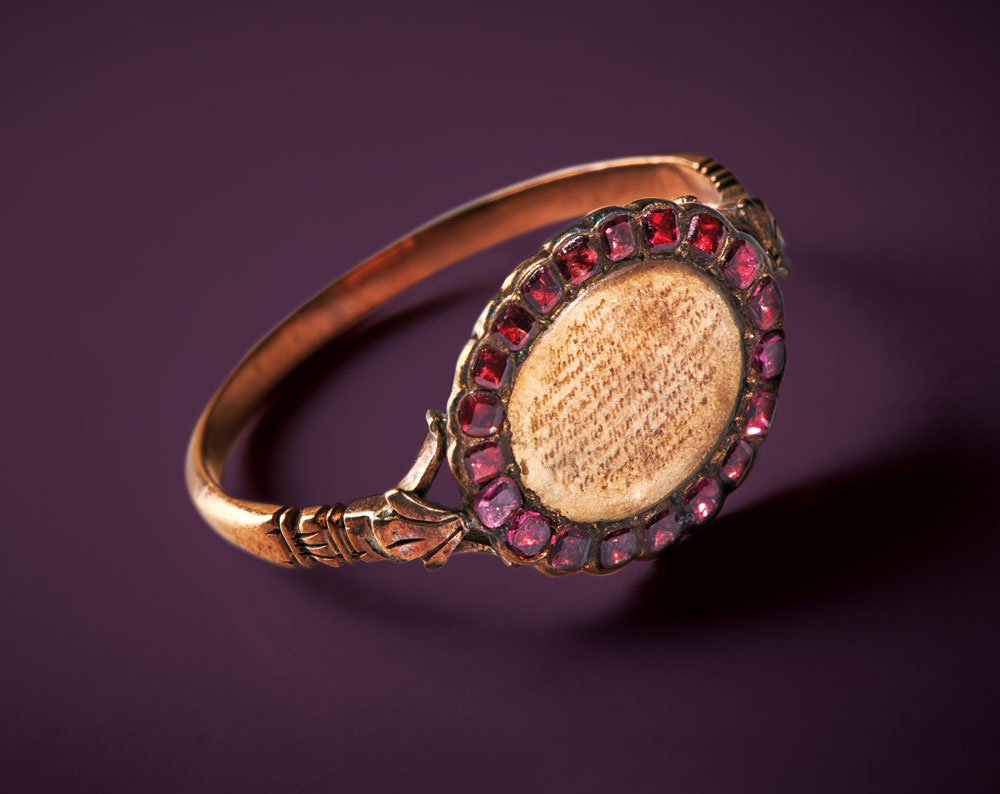
The Cenotaph, Westminster
Sir Edwin Lutyens’s original 1919 design was for a tall pylon supporting a sarcophagus or coffin, adorned with laurel wreaths and the flags of the armed services. The permanent Cenotaph is very similar to the first, but is made of white Portland stone with subtle adjustments. His design methods were based on those of the ancient Greek architects of the Parthenon. Using these Classical proportions, all the surfaces subtly curve so that the verticals would meet at a point 1,000 feet above the ground, and the horizontals 900 feet to the side.
The design of the monument guides the eye upwards in a spiral motion: from the plinth, to the words ‘The Glorious Dead’, the flags on the sides, the dates of the war and the laurel wreaths – carved by the sculptor Francis Derwent Wood – and finally up to the sarcophagus on top. The sarcophagus is emphasised by its top-moulding which casts a shadow, and a third wreath is visible on top.
During the design process Lutyens made several sketches with variations including a figure of a fallen soldier, figures of lions and a flaming urn on top, but these were all dropped from the design. Indeed, the genius of the Cenotaph as a memorial lies in its abstraction as much as its visual perfection. With no human figure and no national or religious imagery, it can have meaning for people of all races and of all faiths – or none.
Lutyens wanted to have sculpted flags on the sides, rather than real ones, but in this one respect the government disagreed. As a result the Cenotaph is dressed with the flags of Britain’s armed services which are periodically renewed. Lutyens’s vision was of a monument that would be universal in its significance. The flags make it a national memorial, with specific military connotations. The Cenotaph can be read in both these ways – and in others.
Photograph: © Tracy Jenkins/ArtUK
Discover more about the Cenotaph
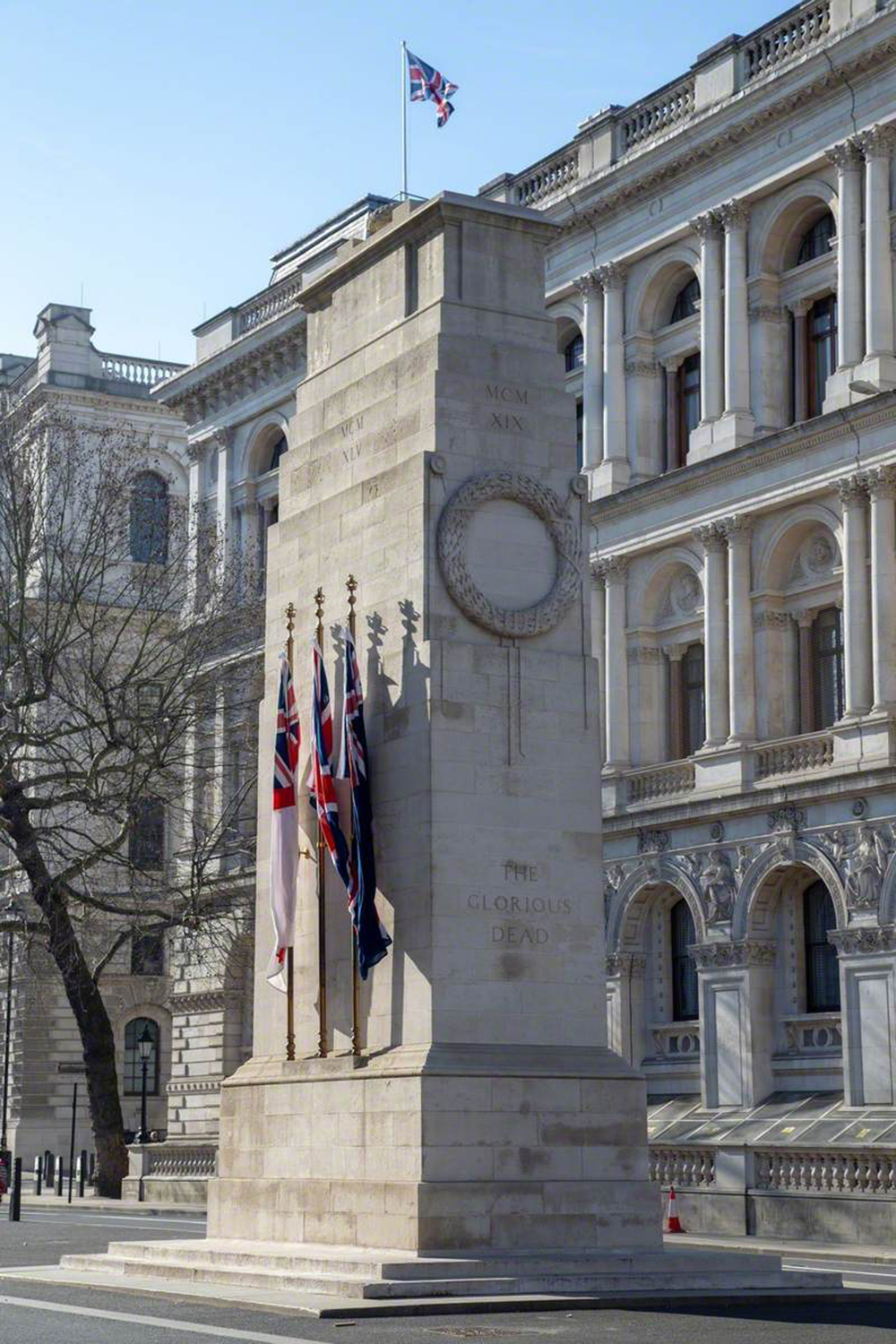
Battle Abbey dairy and ice house
Nestled beneath mature trees at the heart of Battle Abbey are two early 19th-century reminders of the property’s time as a country house. The first is a thatched octagonal building in the Gothick style, echoing the architectural language of the medieval abbey. This is a dairy, and the stone shelves of its cool interior held the separating dishes employed in the preparation of butter, cream, curds, whey and cheese.
Just a few feet away is an ice house, built in brick with a vaulted conical chamber sunk into the hillside and covered with clay and turf. Ice collected in the winter, probably from a pond in the abbey’s park, would be stored in the brick chamber and used to cool dishes and bottles throughout the year.
The dairy was built shortly after Sir Godfrey Vassal Webster inherited Battle Abbey in 1810. It is possible that the arrival of Charlotte Adamson, married to Sir Godfrey in 1814, was the stimulus for this modest but charming building.
Words: Roy Porter
Photograph: Alun Callender
Discover more about Battle Abbey
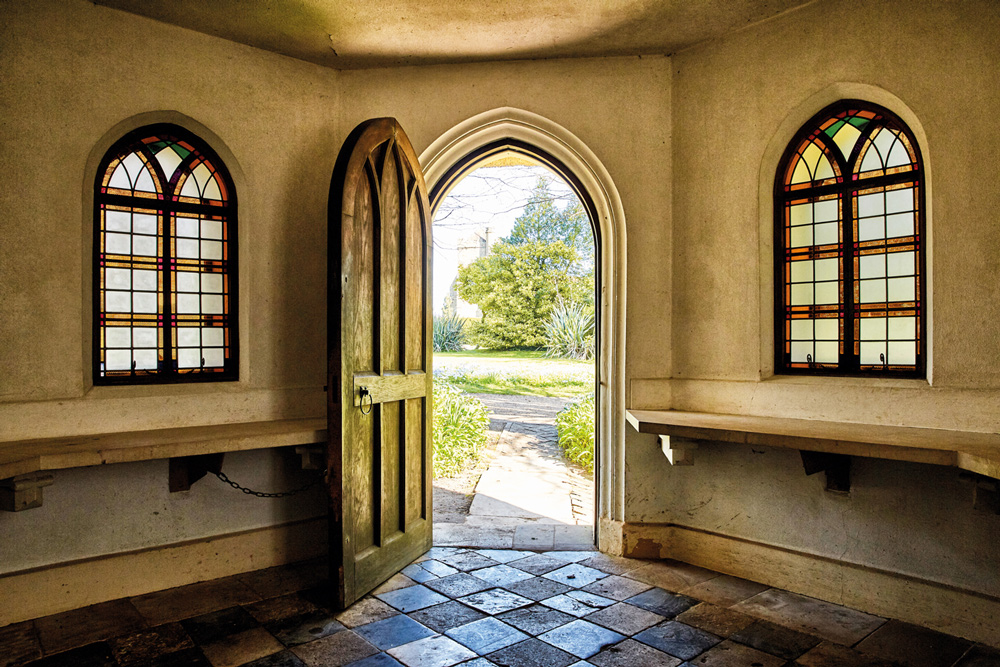
Berwick Barracks smoke drawings
Between the 1720s and 1760s, soldiers at Berwick-upon-Tweed Barracks and Main Guard amused themselves by using candle smoke and stencils to write names and create images on the barracks’ ceilings, including buildings, women and horses. The drawings were hidden beneath later ceilings, and were only discovered during building development in the 1970s and 1980s. Following their removal and conservation treatment, some of the panels were reinstated in the exhibition area, where you can see them today, while the remainder were placed into storage. The aim of our recent work was to secure the panels in storage and allow easy access for research and handling. Each panel was carefully cleaned, lifted and packed into purpose-made boxes as protection against the open-shelf storage system at Berwick, and act as a buffer to variable temperatures and humidity. Now these fragile panels are safe and accessible, we can research the hidden stories in the drawings, which could tell us a lot about the lives of the soldiers who were based at Berwick in the 18th century.
Words: Frances McIntosh & Leesa Vere-Stevens
Photograph: Peter Dibdin
Discover more about Berwick-upon-Tweed Barracks and Main Guard
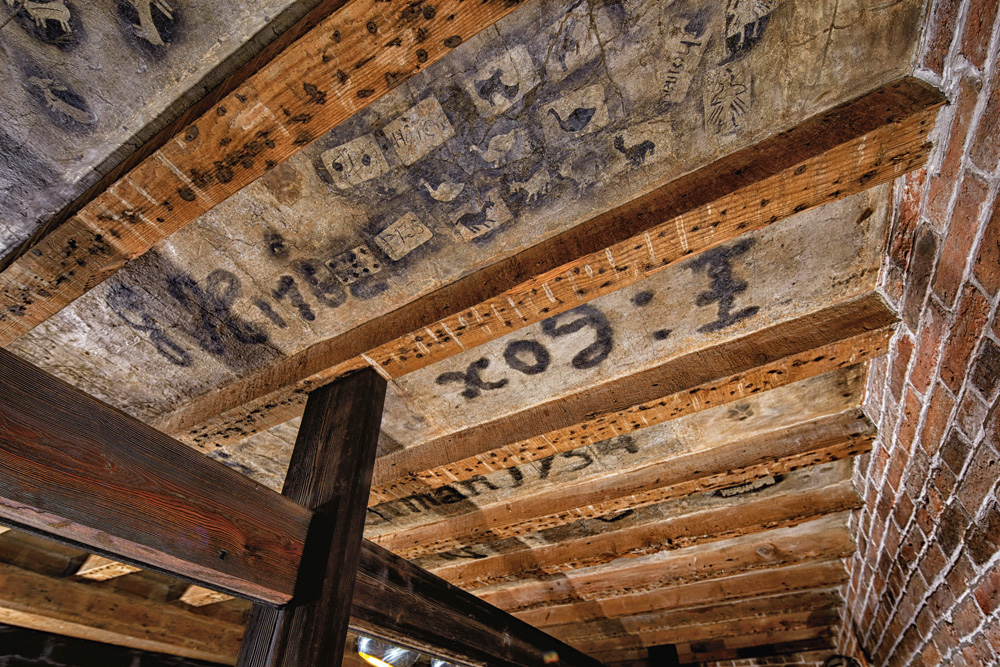
Game Larder, Brodsworth Hall and Gardens
The Victorian game larder at Brodsworth Hall and Gardens in South Yorkshire is a unique octagonal structure, with a pitched zinc roof and slats to allow air to circulate around the game once hung inside. It was originally created by Charles Sabine Thellusson, who transformed Brodsworth into a Victorian gentleman’s estate during the 1860s, when driven shooting was fashionable and became the focus of the Thellussons’ social life over winter. Positioned under shady trees near to Brodsworth’s scullery and gun room, the game larder was built on raised supports, with a fine mesh between the slats to keep vermin and flies out. Inside, the game was hung on rods above a small table the head keeper used to keep records. Over the decades since its creation, the larder had fallen into disrepair and a project was launched in 2018 to install a new floor and replace missing zinc louvers and the rods used for hanging the game. Externally, a path leading to the larder has been restored, with pines, strawberry trees and box plants lining the area as shown in original period photographs. A rare horse-drawn cart used to collect and transport game also had a purpose-built trolley made to enable it to be brought out on very special occasions.
Words: Michael Klemperer
Photograph: Lisa Stoneridge
Discover more about Brodsworth Hall and Gardens
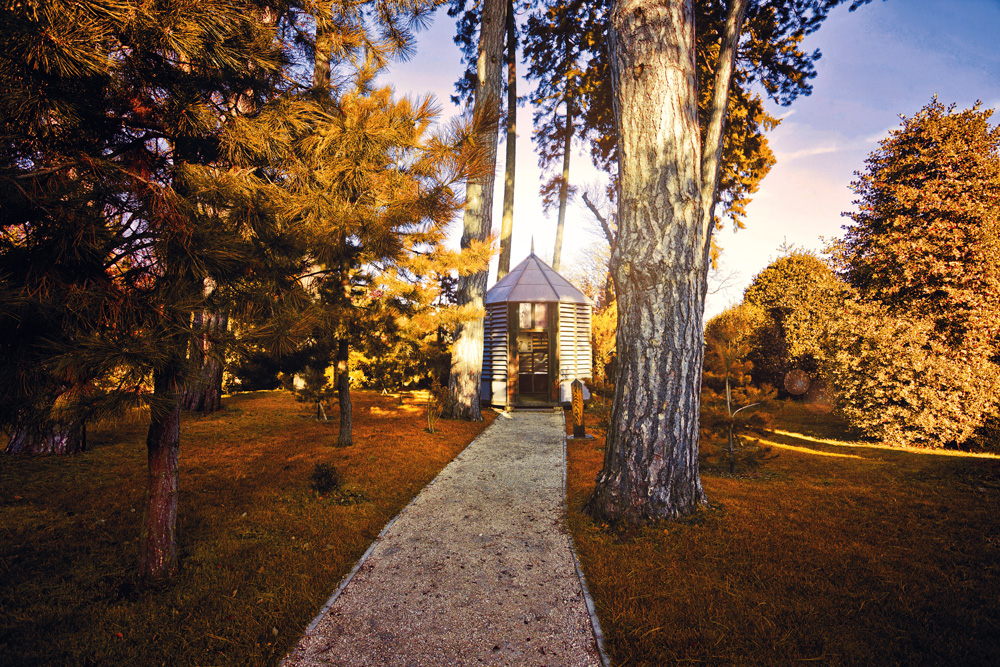
Viking Raider Stone, Lindisfarne Priory
Norse invaders came to Holy Island in AD 793. This was their first significant attack in western Europe and its terrifying nature was widely reported across the continent. Neither the faith of the inhabitants nor the power of St Cuthbert, their saint, had been able to protect one of England’s holiest sites. Might this enigmatic stone, carved a few years later, record the disaster? It was almost certainly a grave marker, but its imagery of warriors with swords and axes suggests it was more than simply a memorial. On the other side are praying figures: possibly a scene of the Apocalypse. Yet perhaps the carving drew attention to Christ’s warning not to interpret every battle as a sign of the coming of the Last Judgement. As such, we may read a deeper response to the event: a symbol of defiance and resilience. This stone was seemingly lost to time, along with the original monastery. Yet the monastery was refounded in the early 12th century and visitors can now make a pilgrimage there, with the stone among the artefacts taking centre stage.
Words: Susan Harrison
Discover More about Lindisfarne Priory
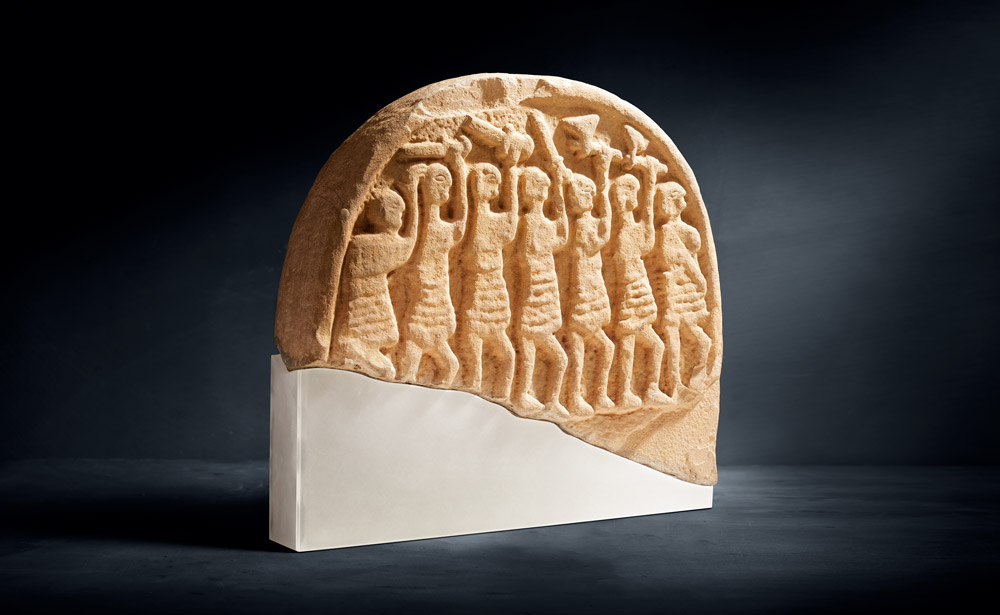
The secrets of Osborne’s chintz
In the centre of Osborne, Queen Victoria and Prince Albert’s palatial holiday home on the Isle of Wight, is their bedroom. This very private room, still full of the pictures and furniture that the royal couple placed there, hides an altogether more intimate demonstration of their intensely loving relationship. The curtains and furniture covers are made of glazed cotton, known as chintz, block-printed with a design of roses and foliage. What is totally unexpected is that the design perpetuates the loving gaze of Victoria (who faces right) and Albert (who faces left) in outline profiles made up of the tendrils emerging from the flowers. These profiles can only be brought into relief by a discerning eye. In 1954 Victoria and Albert’s private rooms at Osborne were unlocked for the first time since Victoria’s death and visitors were allowed in. By the 1960s the original, 19th-century, floral chintz had deteriorated and a copy of the profile chintz was used as a suitable replacement – a very happy choice of fabric. At Osborne, in their most intimate room, Victoria and Albert still gaze lovingly at each other.
Words: Michael Hunter
Photograph: Tom Langford
Discover more about Osborne
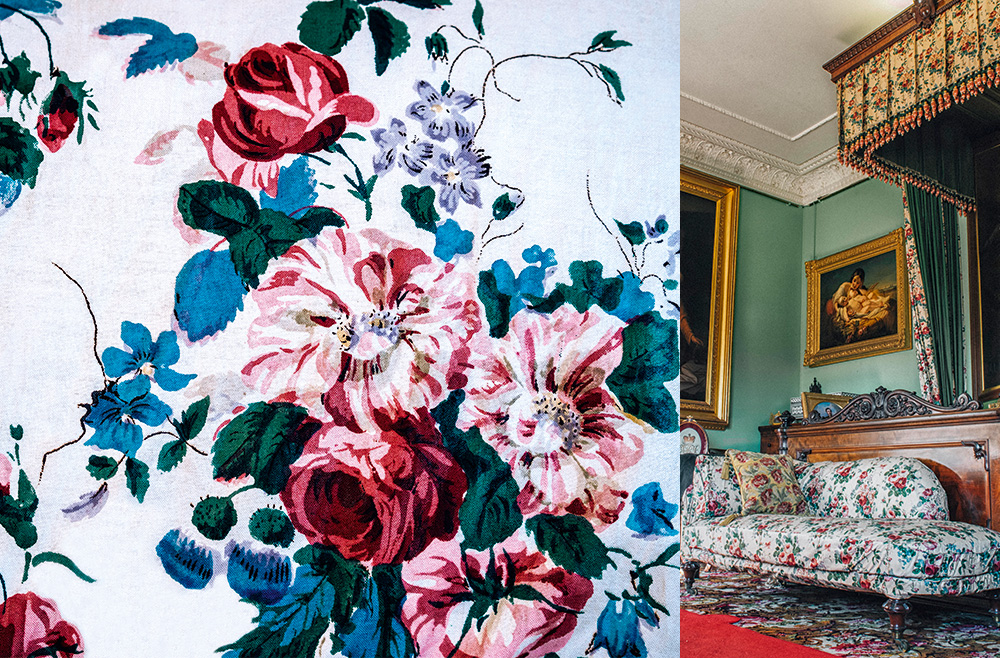
Christopher Wren graffiti at Stonehenge
On one of the large upright sarsens at Stonehenge there is an incision of a cross (for Christopher) and the letters WREN. The inscription is thought to have been incised by 17th-century architect Sir Christopher Wren, builder of St Paul’s cathedral, although there is no direct evidence he visited. Wren (1632–1723) was born in East Knoyle in Wiltshire, some 19 miles from Stonehenge, where his father was rector of the parish. He was first educated at home before boarding at Westminster School for five years. He then went to Wadham College, Oxford, when he was just 17 and began his life as both a great architect and a true polymath. His father became Dean of Windsor when Christopher was three years old, so it’s likely Wren visited Stonehenge as an adult, possibly when conducting a survey of Salisbury Cathedral in 1668. Perhaps he, like many people, was inspired by the awe and beauty of the stones and wanted to leave his mark – something we strongly discourage today.
Words: Heather Sebire
Photograph: André Pattenden
Discover more about Stonehenge
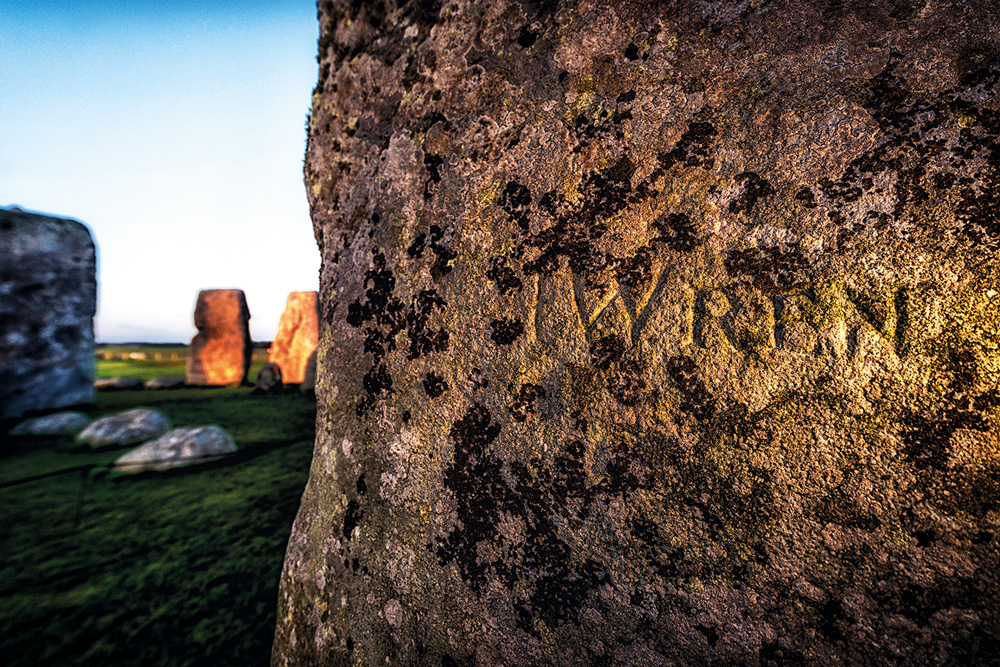
Rembrandt and Reynolds at Kenwood
So famous is Rembrandt’s self-portrait, so frequently reproduced, that many visitors to Kenwood don’t believe it’s real. Its curly gilt frame is very different from the sober one that would have surrounded the picture in Rembrandt’s time but, typical of 18th-century French taste, it hints at the important collection it belonged to a century later.
Look upwards and you’ll see another self-portrait, by the great 18th-century English painter Sir Joshua Reynolds. No doubt Reynolds would have been flattered to share a wall with Rembrandt, whose work he admired. This thought was not lost on the paintings’ 20th-century owner, Edward Cecil Guinness, 1st Earl of Iveagh, who hung them in close proximity in his townhouse, before bequeathing them, along with 61 other exquisite paintings and Kenwood itself, to the nation.
Words: Allison Goudie
Photograph: Gareth Iwan Jones
Discover More about Kenwood
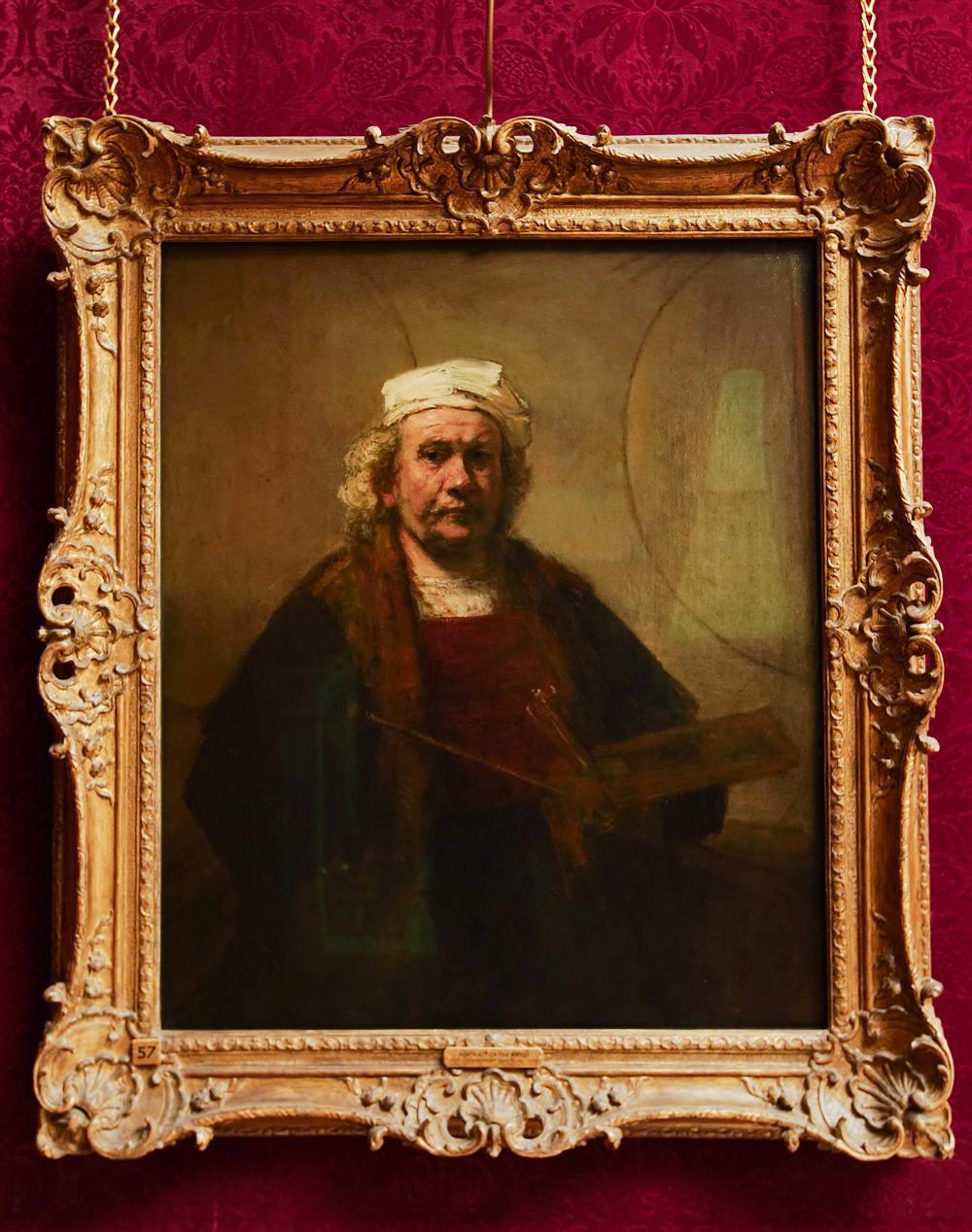
Discover More


